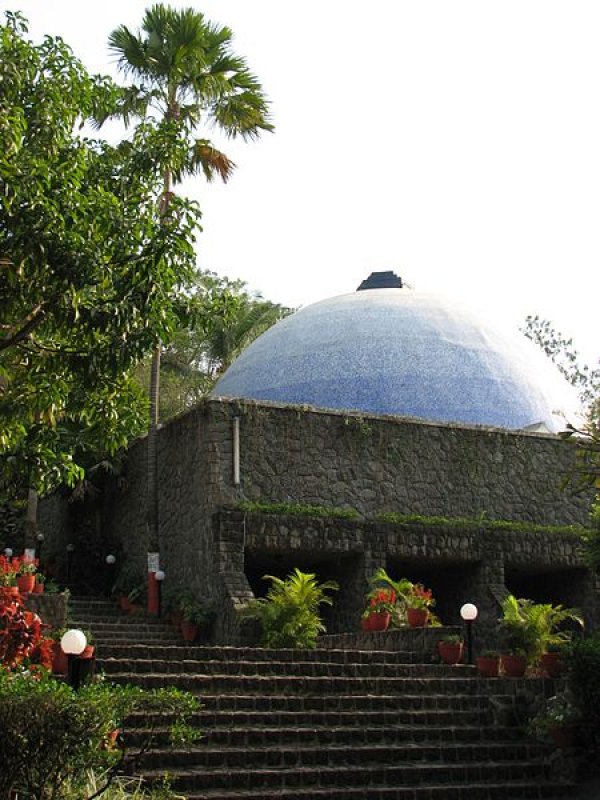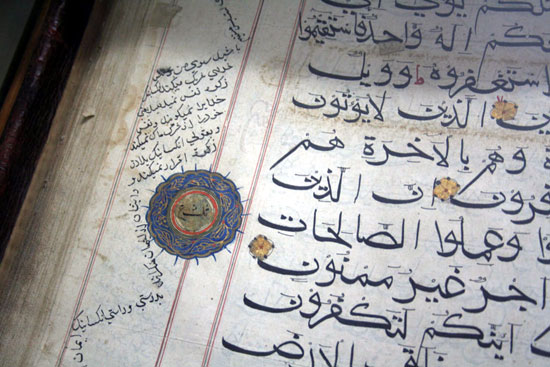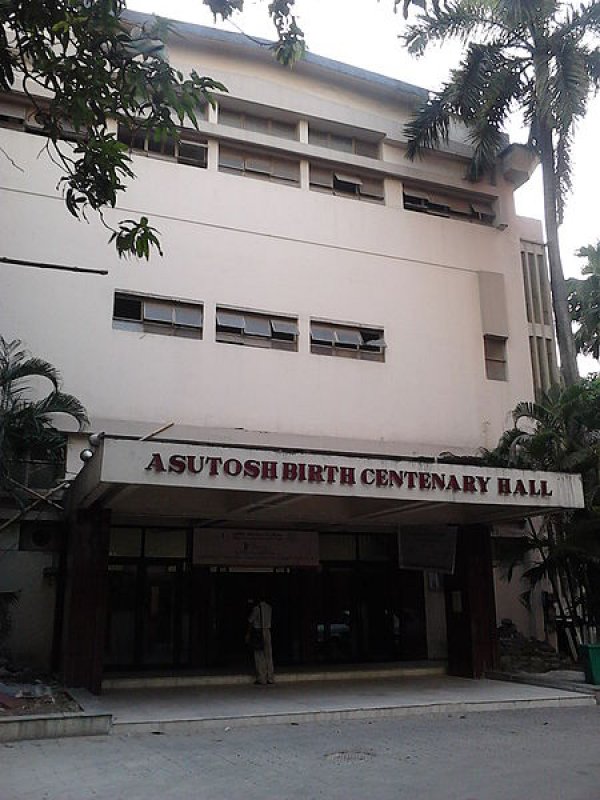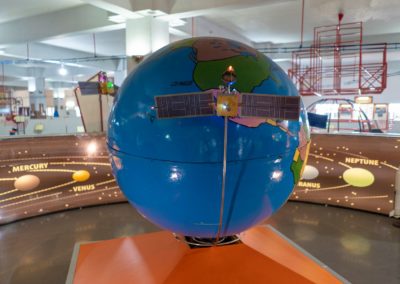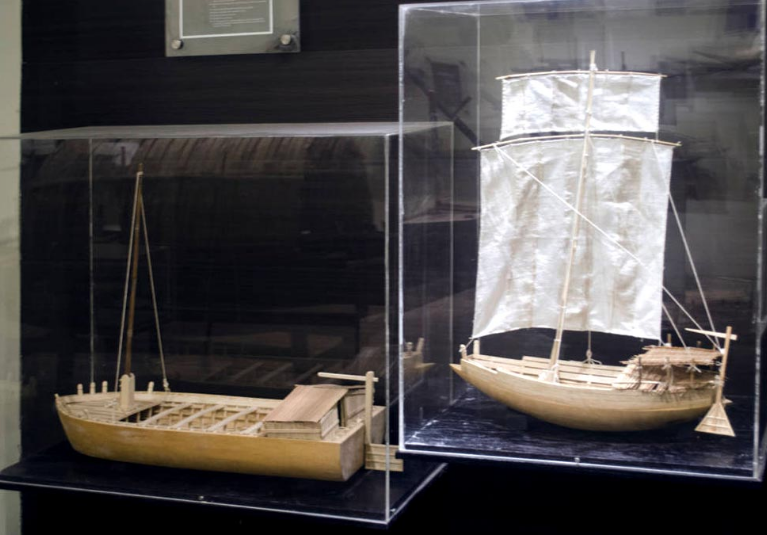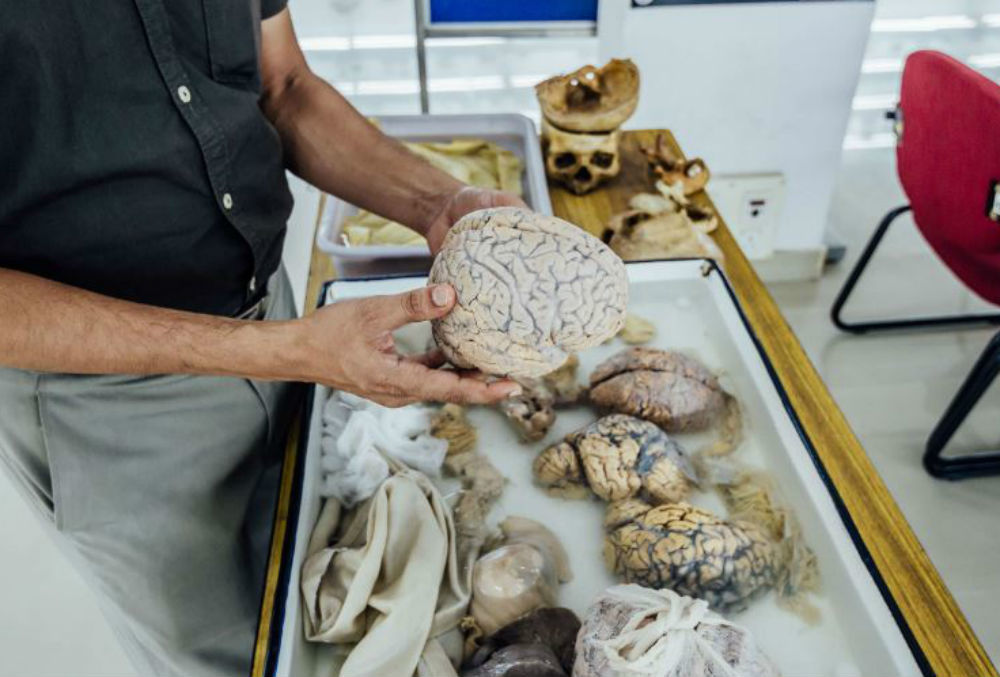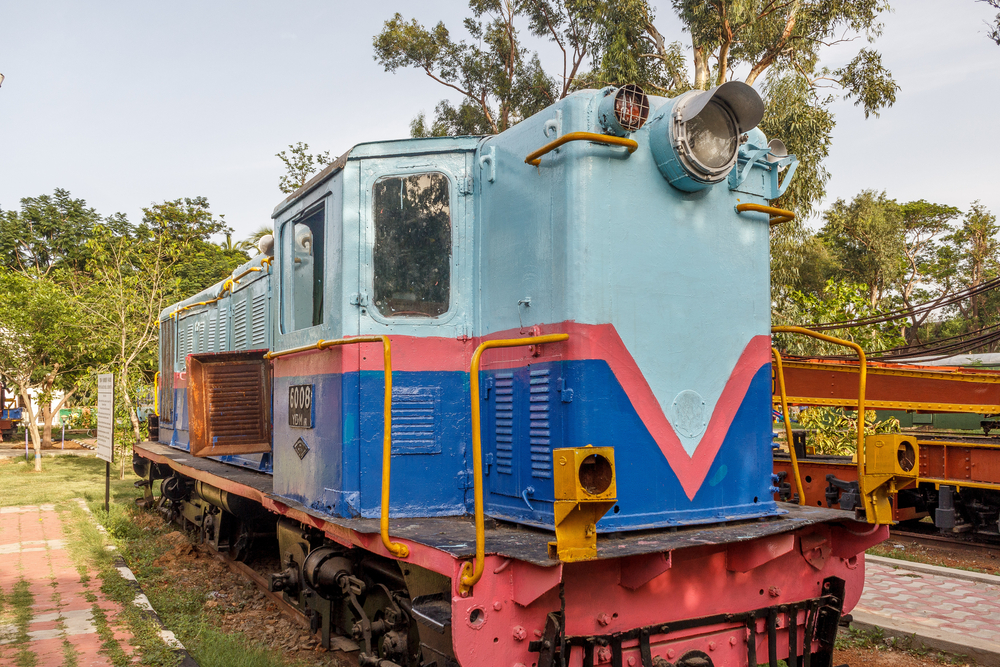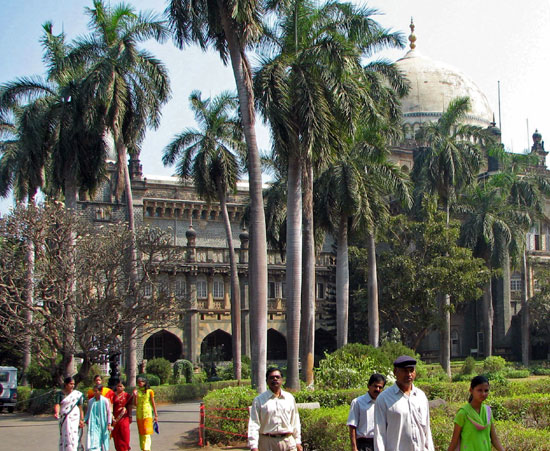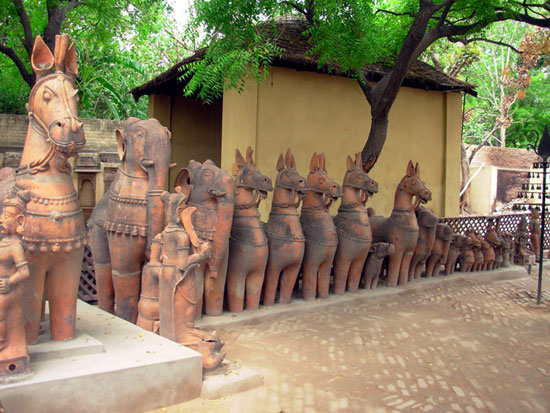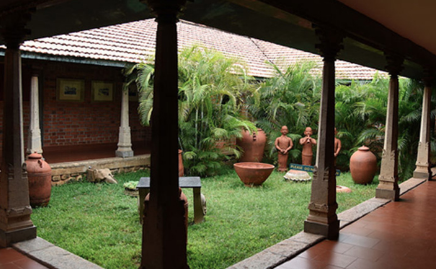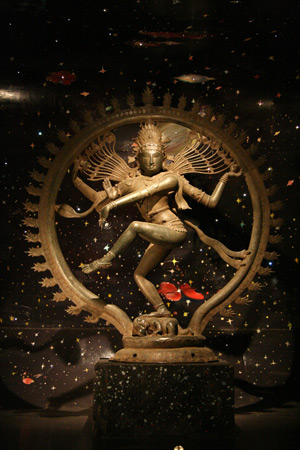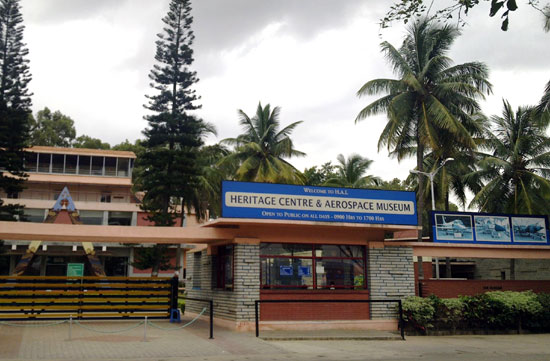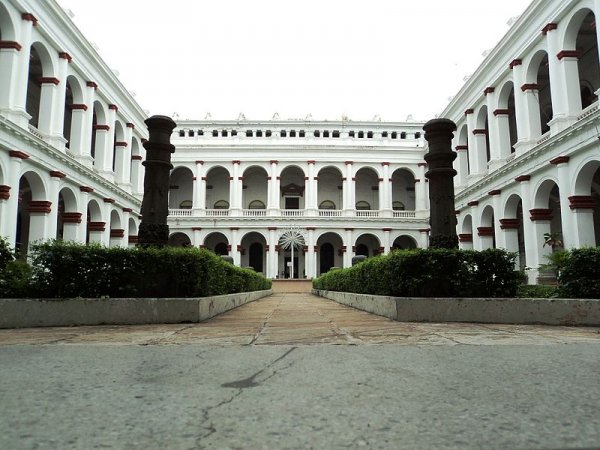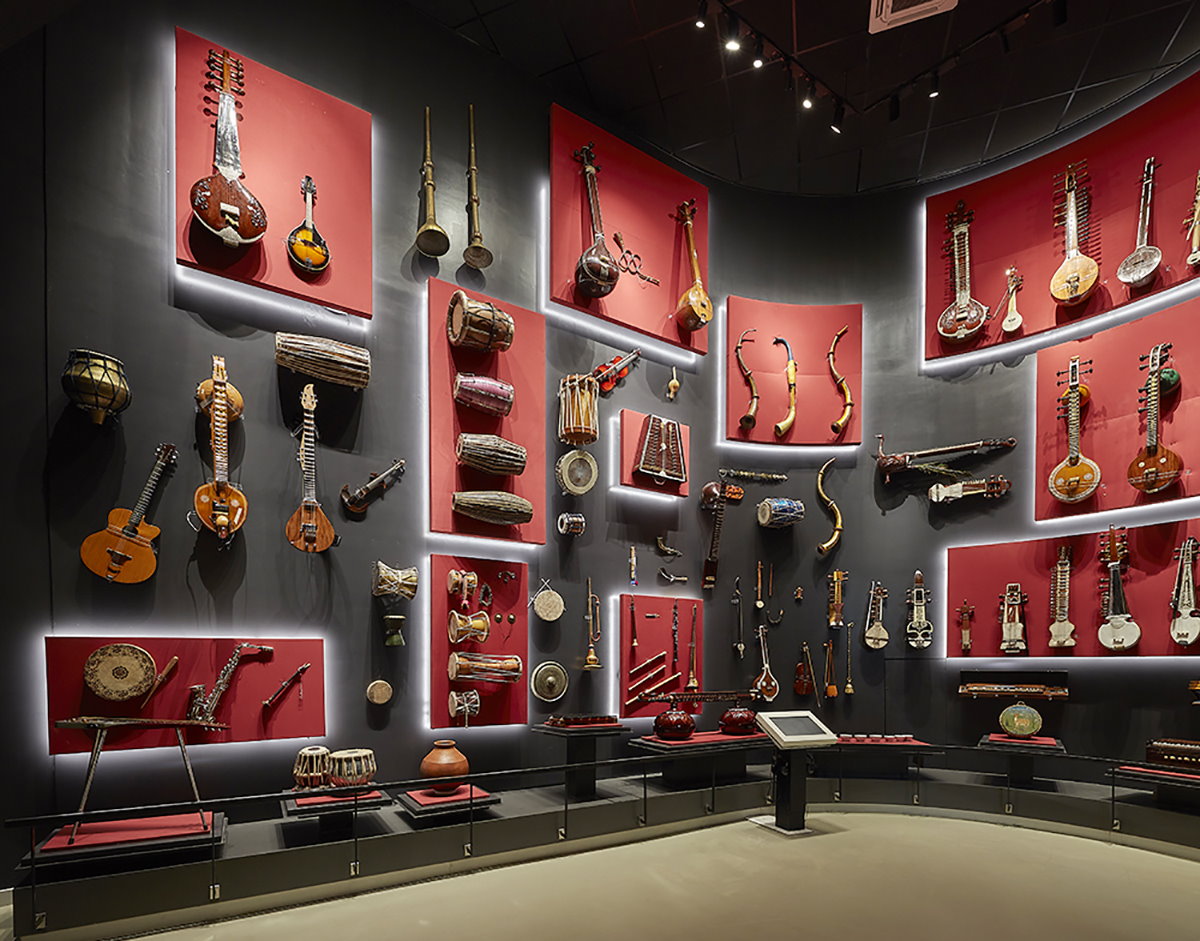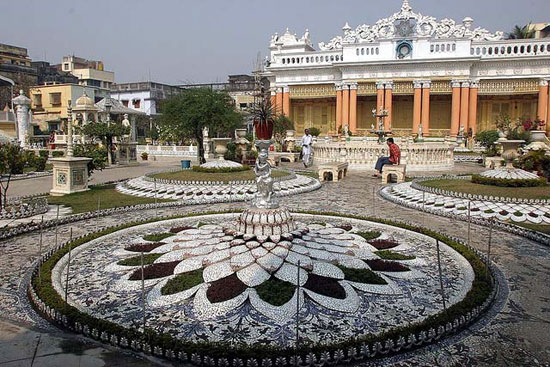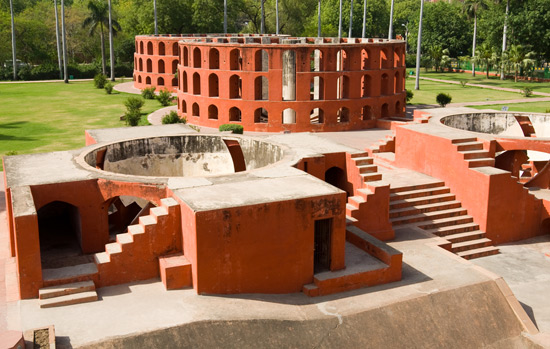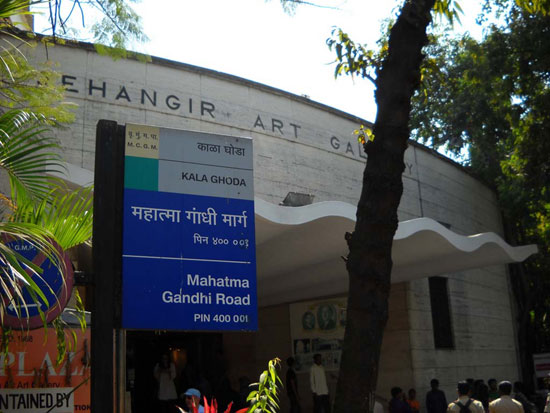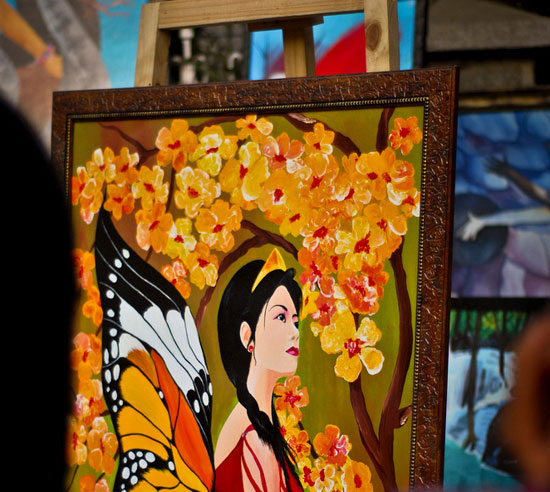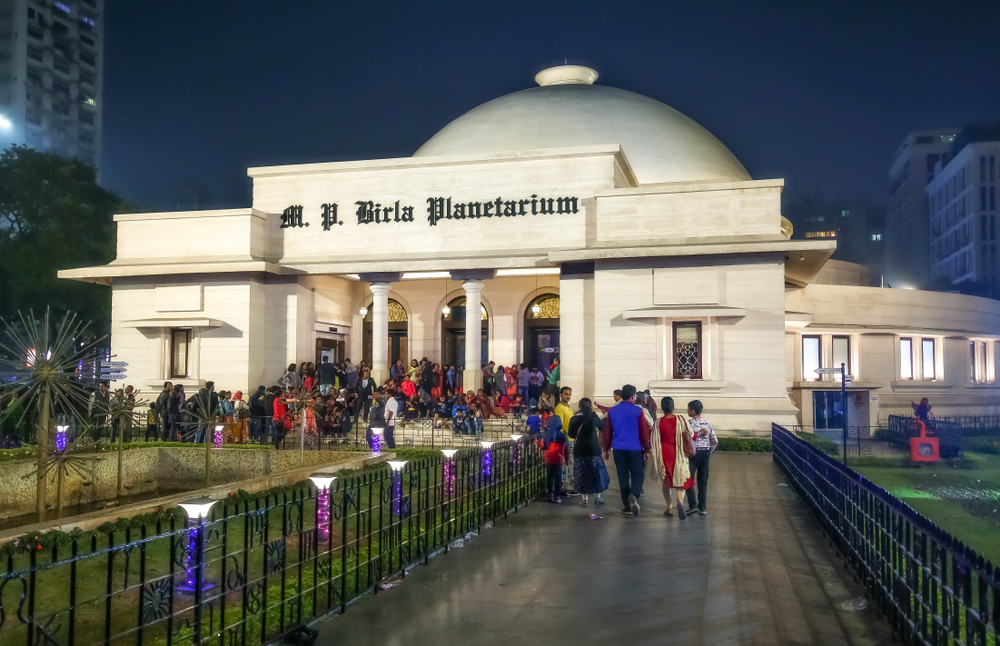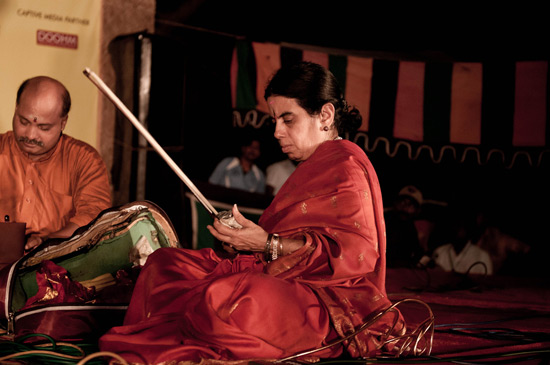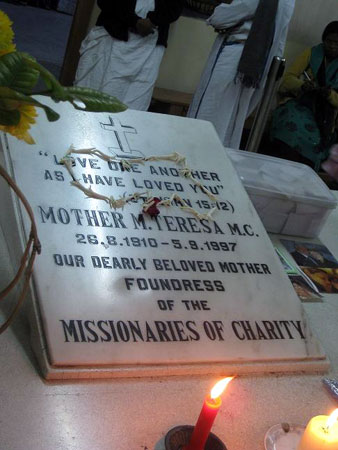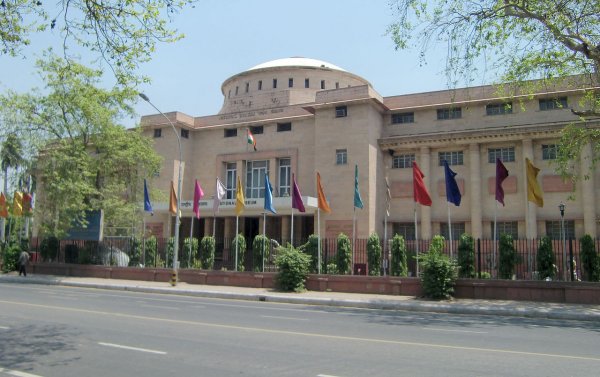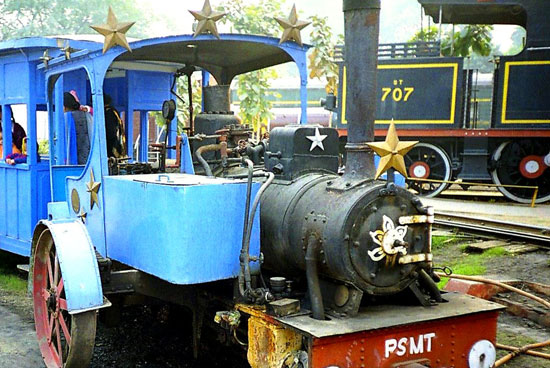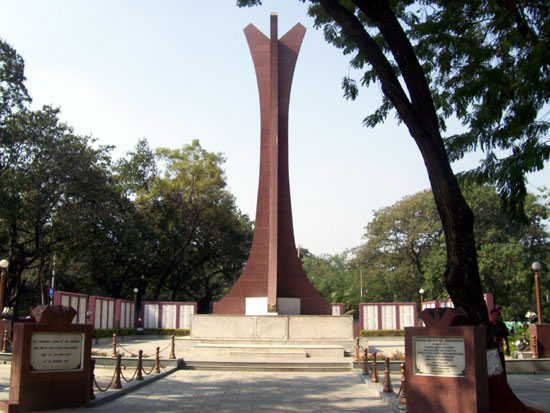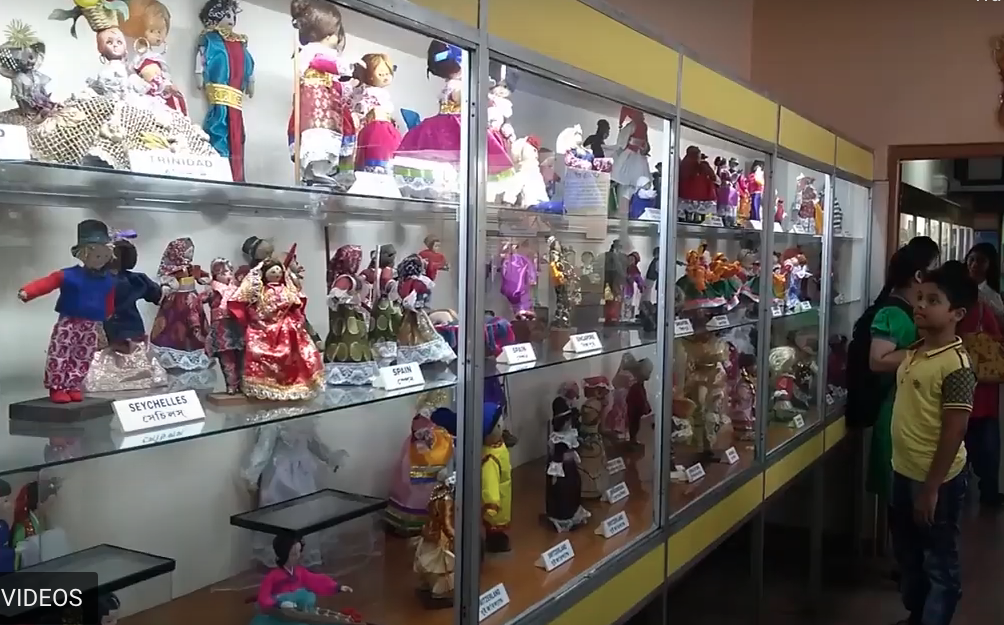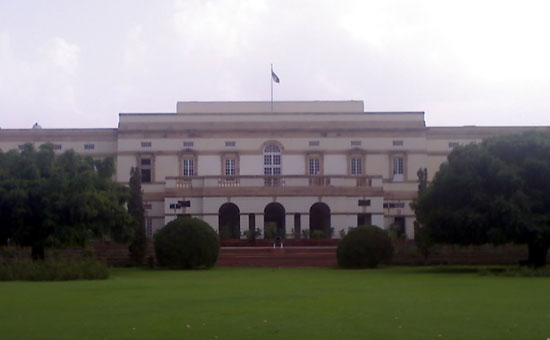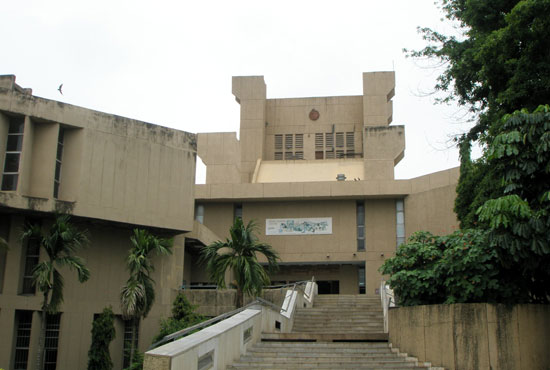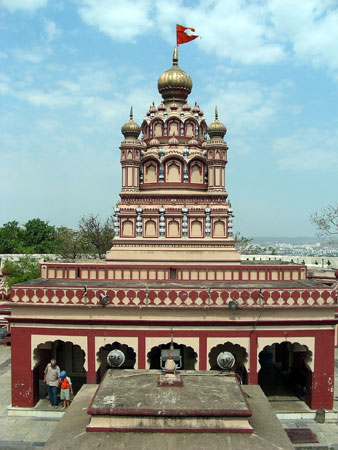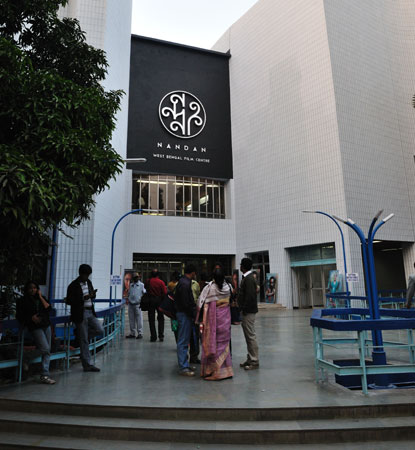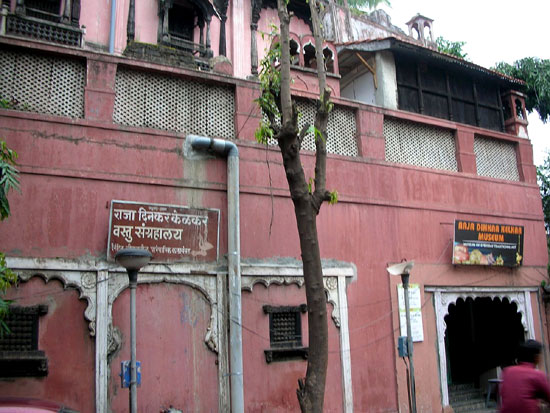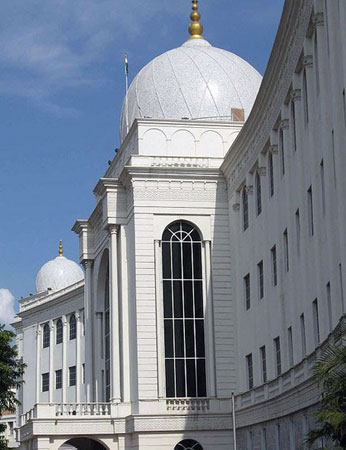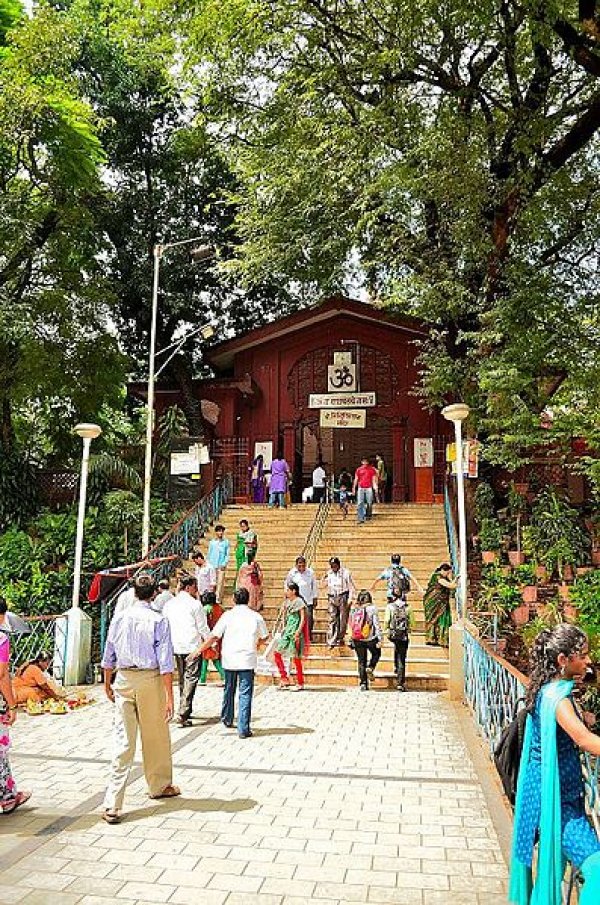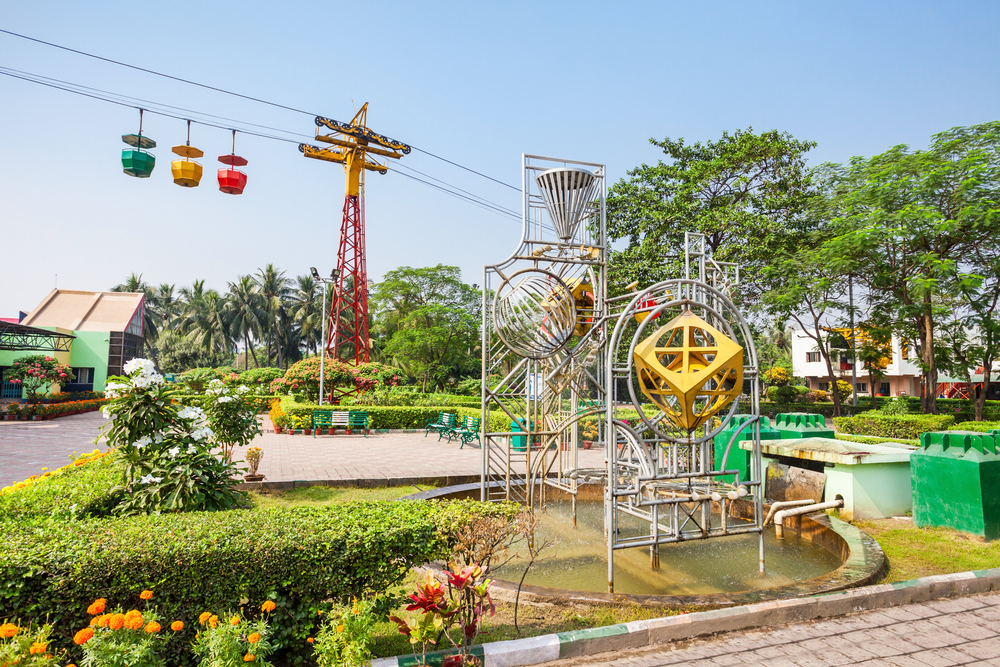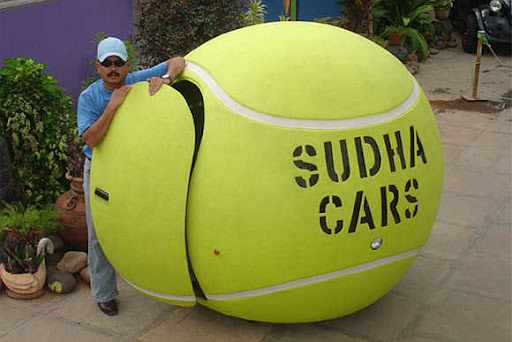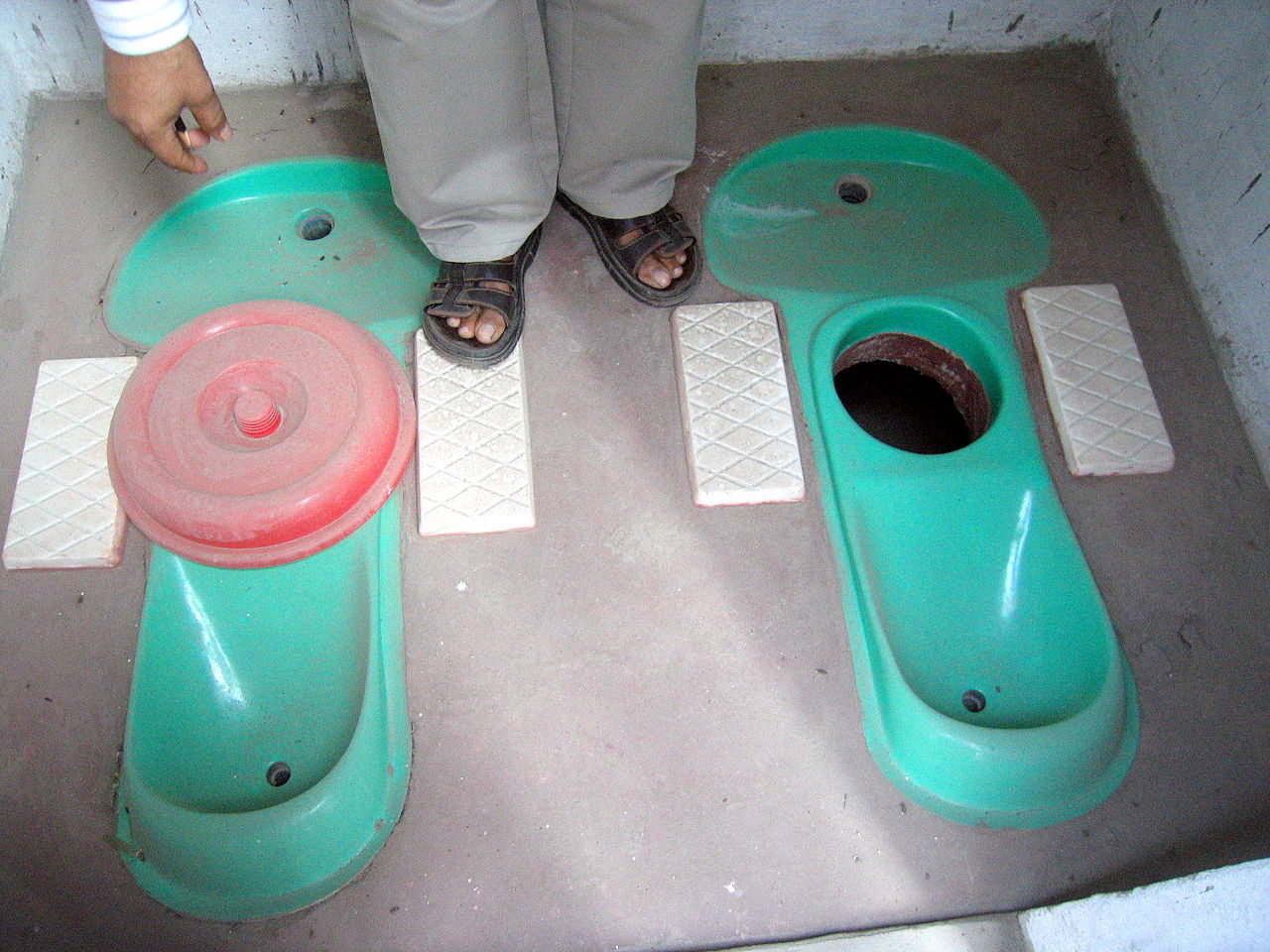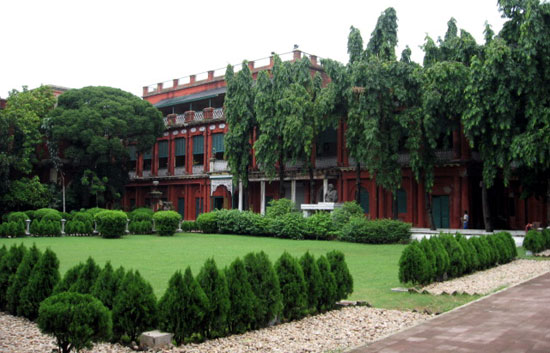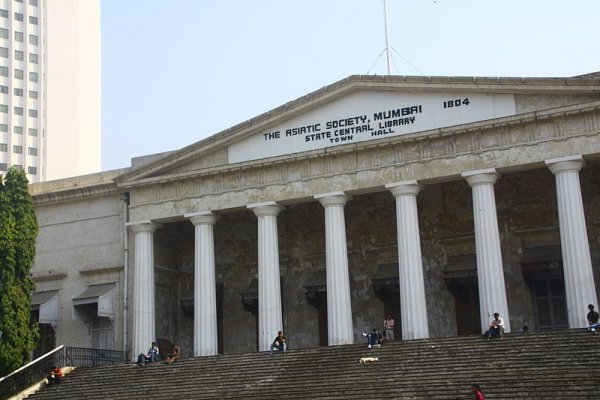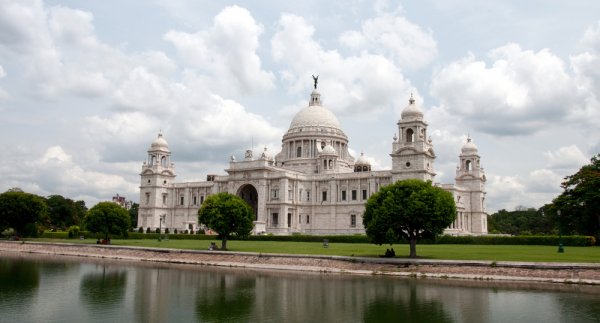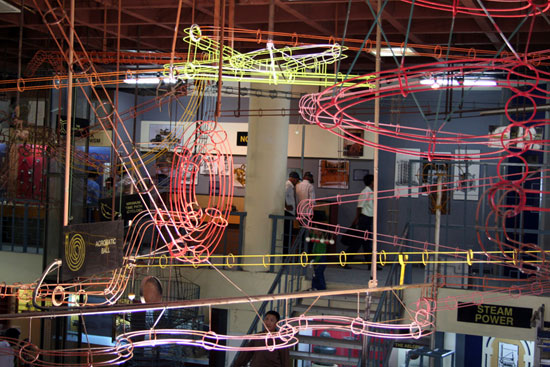Points of Interest
Ambedkar Museum
Senapati Bapat Road
Pune, India
A social reformer and independence activist who wrote the Constitution of the Republic in 1947, Dr. Babasaheb Ambedkar is one of the most important people in the history of India. The splendid array of his personal effects also shine a light on a particularly intriguing phase of South Asian social history, with items such as the man's violin, shoe collection, fur caps, hand carved paperweight, gardening scissors, and furniture in excellent condition. Such luminaries as the Dalai Lama have visited the museum over the years due to Ambedkar's commitment to the values of Buddhism.
Andhra Pradesh State Museum
Red Hills
Hyderabad, India
Andhra Pradesh is said to be the historical meeting point between the cultures of North and South India. This museum is an excellent demonstration of this admixture of styles, customs, and conventions. Dating back to 1915, it is the state's oldest museum. The 1st-century Lotus Medallion will blow you away with its sheer age and originality. A mocked-up room from the age of the Nizams takes you back to Hyderabad's days of early flourishing. Jain, high-caste Hindu, Buddhist, and Islamic art graces the numerous stories and anterooms, ensuring that any Indophile will be left more than satisfied after a trip here. Egyptian mummies, numismatics displays, and Bidriware top off a stunning assortment of objets d'art.
Asutosh Museum of Indian Art
Centenary Building, 87/1 College Street
Kolkata, India
Established in 1937 as part of the expansion of Calcutta University's campus and research interests, the Asutosh Museum of Indian Art will always be remembered as the first public museum established in the Subcontinent. Named after the man who pioneered the study of Indian culture in higher education, Sir Asutosh Mukherjee, the museum was established to educate the public about the history of Indian and, more specifically, Bengali art. Although the decor may be drab, there are some fine specimens of 1st-century BCE terra-cotta, textiles, folk art, sculpture, glasswork, and metalwork dating back centuries. At present there are 25,000 objects on view.
BM Birla Science Centre
Off of Naubat Pahad Lane
Adarshnagar, Hyderabad, India
The 35-minute shows at the BM Planetarium use modern technology to educate about our solar system, but actually originate from Islamic scientific observatories of the Middle Ages that can be found all over the Subcontinent. The attached Technological Museum has its fair share of curios, although the premises haven't been maintained to a very high standard. Much better is the small exhibition devoted to the patron of the venue, BM Birla himself, and even better than that is the gigantic intact skeleton of a Kotasaurus dug up 20 years ago in a nearby village. Shows in English commence at 11:30 a.m. each day.
Boat Museum
Ground Floor, Cultural Research Institute
P 1/4, C. I. T. Scheme-VII, VIP Road
Kankurgachhi, Kolkata, India
India’s only boat museum, step inside to see 46 scale models of native boats. The museum is free to visit and includes several miniature boats as well as the large models depicting boats from Kerala, Tamil Nadu, West Bengal, and Bangladesh. Learn about the role boats have played in the culture and history of India. There are no guides and photography is not allowed.
Brain Museum
Room 002, Neurobiology Research Center
National Institute of Mental Health and Neurosciences
Hosur Main Road
Bangalore 560029, India
The National Institute of Mental Health and Neurosciences (NIMHANS) Neuropathology Department is home to the Brain Museum, which opened to the public in 2010. Visitors can see a variety of brain specimens including those from people who suffered from trauma, a stroke, schizophrenia, HIV, cancer, and birth abnormalities. In addition to brains, the museum also displays human fetuses, hearts, eyeballs, lungs, spinal cords, and other organs.
Chennai Railway Museum
New Avadi Road
Villivakkam, Chennai, India
This museum includes a collection of Indian locomotives that reflect the glory days of Indian Railways, back during the British period. The outdoor exhibition includes vintage coaches of Nilgiri Railways and houses around 40 different models of trains. See photographs and artifacts from the beginning of Indian Railways along with steam engines and other historical models. The museum includes a children’s park with slides and a toy train ride, the route of which cuts through the rich history of the country’s rail heritage. Located in the Villivakkam neighborhood and a popular tourist attraction, the museum includes a souvenir shop.
– Information provided by Tour My India
Chhatrapati Shivaji Maharaj Vastu Sangrahalaya
159-161 M.G. Road
Shahid Bhagat Singh Marg Kala Ghoda
Mumbai, India
Originally called the Prince of Wales Museum, and founded in 1909 to celebrate the visit of the then-Prince of Wales, this fine museum has 50,000 exhibits that include artifacts from the Indus Valley Civilization and timbers grown during the Raj period. Its architectural design is a hybrid of Jain and Maratha columns and Western Indian pinnacles. The museum, whose name is shortened to CSMVS) also houses the only textiles gallery in Mumbai, celebrating the city's historic reliance on this industry. The collection shows an international influence, with porcelain, jade, and ivory pieces from China and Japan, and an array of European paintings.
Crafts Museum
Pragati Maidan Bhairon Marg
New Delhi, India
Crafts Museum was set up in 1956 to protect traditional creative skills that were being lost in India's post-Independence rush toward industrialization. The Delhi site was originally planned as an artistic center, where artisans could gather and trade tips. But by the 1980s, the museum had become so successful in acquiring craftwork that it became a major visitor attraction on its own, one where artisans came not to learn, but to sell. The museum shop continues to be a big draw for Western tourists who want to buy textiles, jewelry, pottery, and paintings from the craftspeople themselves. As well as housing research and reference facilities, the museum contains a superb permanent collection of more than 20,000 works, from charrake (shallow bell metal vats used in Kerala for making rice pudding) to the Bhuta wooden figurines worshipped in Karnataka.
DakshinaChitra Museum
East Coast Road
Kanchipuram District, Chennai, India
DakshinaChitra is an exciting cross cultural living museum of art, architecture, lifestyles, crafts and performing arts of South India. The main mission is to exhibit, promote and preserve aspects of the broader, more inclusive cultures of the states and to bring these arts to the public in a participative, enjoyable, and engaging way. Try your hand at simple art and craft activities as you tour or view the rotating art exhibits. Workshops are held for adults and children, including one on Gond painting. There is a ceramic center, open air theater, library, and a crafts shop and crafts bazaar. DakshinaChitra Heritage Museum overlooks the Bay of Bengal, at Muttukadu, 25 kilometers (15 miles) south of central Chennai, on the East Coast Road.
– Information provided by DakshinaChitra Museum
Gandhi Smriti
Tees January Marg
New Delhi, India
Gandhi Smriti, a handsome and low-slung white house on a quiet New Delhi street, is where Mahatma Gandhi was assassinated in 1948. It is now a museum dedicated to the Indian spiritual and political leader. In 1948, the house belonged to industrialist G. D. Birla, and Gandhi stayed here for a few months as his guest. A permanent flame marks the spot in the back garden where the Indian leader fell, reportedly uttering, "He ram" (O God) as his final words. Exhibits, dioramas, and multiple documentaries tell the story of Gandhi's life, from his early training as a lawyer to his national campaign of ahimsa (nonviolence) against the British imperial occupation. Gandhi's spartan bedroom is presented in the exact condition that he left it, containing a mere 11 worldly possessions, including his glasses and walking stick.
Government Museum
Pantheon Road
Egmore, Chennai, India
Also known as Madras Museum or Egmore Museum, this institution, founded in 1851, has permanent exhibits pertaining to zoology, botany, anthropology and geology, as well as an archaeological section exploring all the major South Indian periods including Chola, Vijayangar, Hoysla and Chalukyas. It also has separate sections for philately (collection and study of postage stamps), children's interests, and ethnology. A bronze state of Ardhnariswara (the coupling of the Hindu gods Shiva and Parvati) occupies the central court. There is a well-stocked library, and the museum hosts a regular schedule of lectures and films.
HAL Aerospace Museum
Airport-Wather Road
Bangalore, India
Hindustan Aeronautics Limited made Bangalore its headquarters in the 1940s. It started life as an engineering company charged with fixing damaged Allied warplanes in World War II before becoming India's first aeronautical design and manufacturing corporation. This museum is a tribute not only to the art and science of flying but to the specific scientific heritage of Bangalore. The history of Indian aviation is told by magnificent displays of aircraft engines, defunct helicopters, airplanes (such as Russian MiG-21s), and even space rockets. Things get a bit interactive with state-of-the-art flight simulators and a mock air traffic control tower. There are video presentations on such topics as the development of gas turbines and jet propulsion systems.
India Seashell Museum
191/1A2, Kalpakkam Road
Mahabalipuram, India
India Seashell Museum is the largest seashell museum in India, located about 40 minutes south of Chennai. It houses over 40,000 specimens of rare and unique seashells and minerals which offers visitors an amazing visual treat and a unique perspective on conchology. See shells gathered from across the world. Includes an aquarium, mineral room, and the Pearl Museum. Kids will love the outdoor dinosaur park, while souvenirs can be purchased from the gift shop.
– Information provided by India Seashell Museum
Indian Museum
27 Jawaharlal Nehru Road
Kolkata, West Bengal 700016, India
Established in 1814 by the Danish botanist Dr. Nathaniel Wallich, the Indian Museum is one of the world’s oldest museums. Extending over an area of 930 square meters (10,000 square feet), it contains nearly 60 galleries of art, anthropology, archaeology, zoology, botany, and geology. It now boasts over one million exhibits including an Egyptian mummy that is over 4,000 years old, the Buddha’s ashes, a four-lion Ashoka stupa or pillar (the official emblem of India), and a Buddhist stupa. The museum also contains fossil skeletons of prehistoric animals, ornaments, Mughal paintings, stones, coins, Gandhara art (1st-7th century Buddhist art), rare antiques, and a collection of meteorite fragments.
Indian Music Experience Museum
Brigade Millennium Avenue, JP Nagar 7th Phase
Bangalore, India
Get ready to experience all things music, at the Indian Music Experience Museum. Discover various genres, explore the stories about iconic songs and music makers, marvel at the beautiful musical instruments and artifacts on display, and create your own music. Children should enjoy the music-themed doll display. Traditional or contemporary, young or old, the museum has something for everyone. Folk music performances are held every evening beginning at 4:30 p.m. A cafe offers food and drinks or pick up a souvenir in the gift shop.
– Information provided by Indian Music Experience Museum
Jain Temples
Badridas Temple Street
Kolkata, India
Not just one, but a complex of three remarkable Jain temples is located in North Kolkata. The intricately decorated, wave-roofed exterior is one of a kind: arguably as iconic as the Taj Mahal or the Gateway of India. Over 2,000 years old, the Jain religion's key tenets are pacifism, spiritual liberation through faith and good conduct, and intellectual scholarship. Thus these temples contain grandiose busts of Mahavira, the sage who is revered as having developed the basic principles of the religion. Mirror-clad pillars and stained-glass windows in the main hallway create a thrilling effect. A stroll in the garden among the glass-cube mosaics is also highly recommended.
Jantar Mantar Observatory
Sansad Marg
New Delhi, India
This observatory, dating from 1724, is one of five built by Jaipur ruler Jai Singh II. The maharajah, a keen astronomer, was charged by Moghul Emperor Mohammed Shah to construct an observatory that could help revise the calendar. The terra-cotta red constructions, which look like massive sundials, were not only fixed, but also heavy. This made them less sensitive to geological movement and therefore more precise. They were used to calculate the exact time, locate constellations, predict eclipses, and forecast the timing of the monsoon season. Jantar Mantar is reputed to be accurate to within four minutes. Similar observatories were built in Jaipur, Ujjain, Mathura, and Varanasi, and two still work today. The observatory in Delhi might look like a series of sculptures, but these handsome rust-colored structures offer an insight into the scientific prowess of the Moghuls.
Jehangir Art Gallery
Kalaghoda
Fort Mumbai, India
This cool, wide-canopied 1950s gallery is situated in the arty district of Kala Ghoda. Associated with the renaissance in modern Indian art, Jehangir's four exhibition halls feature the works of such luminaries as G. R. Irrana, Vivek Vilasini, and Prashanta Sahu. Such is the prestige of the institution that artists must often wait several years before there is an opening for them to exhibit. The gallery itself and its popular 1970s-retro Samovar Restaurant shot to fame when they were featured in the Bollywood movie Choti Si Baat. Natesans, India's oldest licensed antique dealer, is based on the premises as well. Entry is free throughout the year.
Karnataka Chitrakala Parishat
Kumarakrupa Road, Kumara Park East
Bangalore, India
This is easily the best gallery in Bangalore, containing a plethora of local, national and international artworks. Contemporary Indian sculpture, tribal art from across the Subcontinent, and glorious gold-leaf Mysore masterpieces are all well-represented here. Entire rooms are dedicated to the dramatic paintings of the Himalayas by the Russian artist Nicholas Roerich, whose son Svetoslav emigrated to India. The annual Chitra Santhe is a festival of art held here where artists from all over India gather to network and exchange ideas. The city's College of Fine Arts, affiliated with Bangalore University, is also based here.
M. P. Birla Planetarium
96, Jawaharlal Nehru Road
Kolkata, India
The renovated M P Birla Planetarium opens a door to a fascinating journey into the cosmos with its new makeover including a central star projector, the Starmaster ZMP, with the capability of simulating the natural night sky. See almost the same number of stars that an unaided human eye would see in a dark night sky. Over 8,000 stars are produced by the Starmaster, every star being produced by a unique optical fibre that enhances the brightness, thereby bringing the contrast much closer to nature. See an excellent representation of the Milky Way, star clusters, and nebulae with accurate simulation of more than 10,000 years of star positioning. The astronomical accuracy takes the viewer on a breathtaking journey.
– Information provided by M. P. Birla Planetarium
Madras Music Academy
New No. 68, TTK Road
Mylar, Chennai, India
Established in 1928, the Madras Music Academy is a bastion of Carnatic music, a style of Indian classical music and one of the oldest music systems in the world. In December it conducts an annual Music Festival that includes cherish (Carnatic concerts), bhaji (Hindu devotional songs), music competitions, sabras (congregations), exhibitions, and dance performances. The T.T. Krishnamurti Auditorium and the Asturias Srinagar Auditorium were constructed in 1955 and 1982, respectively. The latter contains a mini-hall for concerts and conferences, a recording and demonstration room, committee room, library, and photo gallery.
Mahatma Phule Museum
Ghole Road
Pune, India
More than 120 years old, Mahatma Phule Museum started its life as the Lord Ray Industrial Museum, celebrating India's scientific progress. The modern venue, however, is managed by a board of trustees and gives visitors the lowdown on the day-to-day lives of Puneites through the ages, boasting large collections of industrial machinery, agricultural equipment, handicrafts, oil paintings, stone figurines, and wood carvings. Period weapons, jewelry, and tools are also on display. On a stranger note, you can take a look at the preserved body parts of various animals from elephants all the way down to small reptiles.
Mother Teresa's Mission
54A AJC Bose Road
Kolkata, India
Now something of a pilgrimage site, this modest house consists of the tomb containing the remains of Kolkata's most famous humanitarian, a small museum featuring her personal effects and the upstairs private quarters where she lived and worked for five decades. It's evident from the Mission that Teresa lived an ascetic life not much different from the lives of the desperately poor people she tried to help, sleeping on no more than a camp bed and eating all her meals from a small wooden plate. Although criticized by some (notably Christopher Hitchens) for her strong opposition to abortion and contraception, Mother Teresa is undeniably an interesting figure worth learning more about.
National Museum
Corner of Maulana Azad Road and Janpath Rajpath
New Delhi 110011, India
Although the National Museum began functioning in 1949, it moved to its present home in 1960. The museum's vast collection includes 5,000-year-old anthropological objects, paintings, Central Asian antiquities, musical instruments, manuscripts, coins, woodcarvings, weapons, and costumes. The archaeology section displays Indian sculptural arts of the ancient Mohenjodaro-Harappa, Indus Valley, Maurya, Sunga, Satavahana, Buddhist, and Tantra civilizations. Also on display are Gupta Terracotta sculptures and gold, silver, bone, and ivory images dating as far back as the 3rd century BCE. The museum also screens educational films on art and culture, hosts talks by experts, and provides access to its reserve collection and library.
National Rail Museum
Chanakyapuri
New Delhi, India
This museum is the historic heart of one of India's biggest institutions, one that employs 1.6 million people. Stretching to 64,000 kilometers (40,000 mi) of track, the Indian Rrailway network is the fourth longest in the world (after the US, China, and Russia). The National Rail Museum pays tribute to that heritage, with displays of antique instruments, mannequins of railway staff, rolling stock such as the luxury white carriage built for the visit of the Prince of Wales (later Edward VII), and memorabilia, including the skull of an elephant hit by a mail train in 1894. The first track laid in India was a 21-mile stretch laid outside Mumbai (then Bombay) in 1853. Among the museum's collection of more than 25 locomotives is the Fairy Queen, a steam engine that first ran in 1855, making it the oldest still-operable steam engine in existence.
National War Museum
Pune Cantonment Camp, Near the Railway Station
Pune, India
Where better to locate India's National War Museum than in the headquarters of the Indian Army's Southern Command? A stirring eight-meter (25-ft) pillar memorializes all those who lost their lives in the country's post-1947 conflicts, such as the Indo-Chinese War and the Indo-Pakistan War, the latter fought over what is now Bangladesh. A genuine Mig-23 fighter plane used in the Kargil War and a mock-up of a famous Indian Navy frigate are perhaps the two most intriguing exhibits on show here. The National War Museum also runs educational programs to inform children and young people about India's rich and varied modern history. Opening hours are daily, 9amto 6pm Closed on Sundays and government holidays.
Nehru Children’s Museum
94/1, Chowringee Road, Maidan
Kolkata, India
The exhibits in Nehru Children’s Museum are spread over four floors, and enable a child to take off to the world of epics, the world of science, and to a dream world. A doll’s gallery includes dolls from 92 countries, while a second gallery has dolls from 37 countries. There is a Ganesh Gallery displaying 300 Ganesh idols. The Ramayana and Mahabharata galleries have miniature models, creating a world where children can learn about Indian heritage and epics. The museum is open Wednesday through Sunday from 11 a.m. to 6. p.m.
– Information provided by Nehru Children’s Museum
Nehru Memorial Museum and Planetarium
Teen Murti Marg
New Delhi, India
Originally the house of Jawaharlal Nehru, Teen Murti Bhavan (Three Sculptures House, named for the three statues of soldiers outside) became the official residence of the Indian prime minister after the country achieved its independence in 1947. It was designed by Robert Tor Russell, the British architect who also designed Connaught Place. In 1984 the residence was turned into a museum, and its grounds now house the Nehru Memorial Library and the Nehru Planetarium. The museum contains newspaper clippings and photographs to illustrate the history of the Independence Movement; the library is reputed to be an excellent source for researchers in modern Indian history, while the planetarium features the space suit of India's first astronaut. Politics students will also be interested, as this building was the childhood home of two of India's most famous 20th-century leaders, Indira Gandhi and Rajiv Gandhi.
Nehru Science Center
Mahalakshmi
Mumbai, India
This remarkable attraction, set up in 1977 as India's largest interactive science museum, spreads across 14 acres of land, and boasts more than 50 activities exploring concepts such as sound, energy, mechanics, and transportation. With intelligent robots and exhibits allowing visitors to try on "virtual makeup," among other things, The Hall of Computing seeks to bring some excitement to one of India's premier realms of expertise. The intricate models of the Hall of Aerospace examine the history of flight and India's contribution to space exploration. The standout in the Prehistoric Animal Life section is the scale mockup of a ferocious pterosaur.
Netaji's Residence
Netaji Bhawan 38/2 Elgin Road
Kolkata, India
This museum is devoted to the life of independence hero Subhas Chandra Bose, who took the controversial path of making a pact with the Axis powers in World War II and leading the Indian National Army against the British in the Asian theater. Strongly opposed to Gandhi's nonviolent methods of protest, Bose died in a plane crash at the end of the war, although there are numerous conspiracy theories about this (suggesting, perhaps, that he lived until 1985 as a Hindu renunciate in Uttar Pradesh). Preserved in accurate 1940s style, the museum itself was the mansion where Bose escaped British house arrest in 1941. Exhibits include the car he used for the big getaway.
Parvati Temple
2170 Sadashiv Peth
Pune, India
Parvati Temple is, in fact, a conglomeration of five major Hindu temples situated on a hill some 640 meters (2,100 feet) above the rest of Pune. The oldest, Devdeveshwar, is also the oldest heritage building in the city, dating back to 1749. Its distinctive blackstone façade is unmistakable on the Pune skyline. Other sites are devoted to the Hindu saint Sri Ramana; the god of preservation, Vishnu; and the Tamil deity, Murugan. The Peshwa Museum tells you everything you would want to know about the glorious pre-Raj era in Maharashtra history. You'll have to walk 103 steps up the hill to reach these attractions, but it's well worth the sweat. Opening hours are daily, 5 a.m. to 8 p.m.
Rabindra Sadan and Nandan
1/1 AJC Bose Road
Kolkata, India
If any one building can lay claim to being the beating heart of Kolkatan culture, Rabindra Sadan is it. Erected in the mid-1960s during the heyday of filmmakers such as Satyajit Ray (India's Orson Welles), this arts center boasts a gigantic theater where the very best Bangla productions are put on. The Rabindra Sadan is situated near the Academy of Fine Arts and shares its premises with Nandan, a major movie theater and cinematic education center where the annual Kolkata Film Festival takes place. Nandan was inaugurated by Satyajit Ray himself in 1985 and remains a fashionable meeting place for culture vultures, bohemians, and creatives of all kinds.
Raja Dinkar Kelkar Museum
1377–78 Natu Baug Bajirao Road
Pune, India
This astonishing assortment of Marathi gems was a labor of love for Dr. Dinkar G. Kelkar, who spent a lifetime amassing such curios as a seed carving of the Hindu god Ganesha (now in the Peshwa palace section of the venue), body armor constructed from fish skin, and musical instruments from across the state. Kelkar gave the city of Pune the gift of his personal collection in 1962 and it is now administered by the Indian government's Department of Archeology. Figurines and ornaments made of ivory, silver, and gold dazzle the eye as much as they tell us about the unique history of Western India. All in all, there are around 17,000 exhibits, only a fraction of which are on display at any one time. Opening hours are daily, 9:30am to 6:30pm Closed on Sundays and government holidays.
Salar Jung Museum
Salar Jung Road
Hyderabad, India
Salar Jung was a leading political minister in the time of the Nizam dynasty who had exquisite taste in all things Oriental and ancient. This is the sum total of his lifetime spent collecting wonders ranging from local bidri alloy handicrafts to Buddhist and Hindu sculpture to Moghul glass curios. The art galleries are handily compartmentalized into Eastern, Western, and Indian sections, and feature bronzes, ivory works, oil paintings, modern installations, and all manner of other forms and genres. Don't worry if you're visiting with children as there's a whole section of exhibits devoted to them, ranging across Roman, Greek, Persian, Syrian, and South Asian culture. Its better to avoid Salar Jung Museum on weekends, when it gets too busy with both domestic and foreign tourists.
Saras Baug
2170 Sadashiv Peth Swargate
Pune, India
Saras Baug is an imposing, 10-hectare (25-acre) Hindu temple to Lord Ganesha completed during the time of the Maratha Confederacy in 1784. At that time it stood proudly in the midst of a lake that has since dried up to become one of the most picturesque green spaces in Pune. A quirky museum containing more than 100 idols of Ganesha is also located on-site. Intriguingly enough, the temple was used by the Marathas to discuss military strategy during their struggle against the British. After the British had established their control of Pune, the East India Company funded the renovation of the temple in 1842. Saras Baug is conveniently situated just a couple of miles from Parvati Temple (see below), making sightseeing a lot simpler.
Science City
JBS Haldane Avenue, Mirania Gardens
Kolkata, India
Plan for a full day to visit Science City, India’s largest science center. The complex includes Space Odyssey, Dynamotion, Science Exploration Hall, Earth Exploration Hall, and a sprawling outdoor Science Park. Science City includes a musical fountain and butterfly nursery, both sure to be hits with the kids. Ride the cable cars to see the buildings and expansive grounds from above, which include play areas for children and maze-like hedges. The Maritime Centre is a two-story building that displays interesting exhibits on maritime activity, replicas, and scaled models of boats, ships and sea going vessels.
Sir Mutha Venkatasubba Rao Concert Hall
No. 7, Harrington Road
Chennai 600031, India
Part of the Madras Siva Saran, a home for poor and destitute women and girls, the concert hall was commissioned in 2008 for the preservation and propagation of Indian and other arts and culture. The complex consists of a two-level air-conditioned theater with a 223-square-meter (2400-square-foot) stage, art school, gallery, and coffee shop.
Sudha Cars Museum
19-5-15, 1/D, Bahadurpura X Road
Bahadurpura West, Hyderabad 500064, India
Opened in 2010, Sudha Cars Museum showcases a collection of unique vehicles created by Kanyaboyina Sudhakar as part of his hobby. Some of his creations include vehicles shaped like everyday objects such as a shoe, tube of lipstick, ink pen, bed, purse, coffee mug, hamburger, computer, toilet, basketball, helmet, badminton shuttlecock, golf ball, and more. The collection features motorcycles, bicycles, Jeeps, vans, classic cars, and trucks, including some world record holders. Sudhakar’s 12.5-meter-tall (41-foot-tall) tricycle is the world’s largest and, with a maximum capacity of only 10 riders, he has the world’s smallest double-decker bus.
Sulabh International Museum of Toilets
Sulabh Bhawan, Mahavir Enclave
Palam Dabri Marg, New Delhi, India
Showcasing the history of toilets from 2500 BC to the present, Sulabh International Museum of Toilets is a unique attraction. Visitors can see the evolution of toilet-related technology, social customs, bathroom etiquette, and sanitary conditions. The museum’s collection includes privies, urinals, chamber pots, commodes, bidets, and water closets as well as poems related to toilets and their use. A notable display is the replica of a medieval treasure chest-shaped portable toilet that was used by Englishmen when camping on hunts.
Tagore's House and Museum
Jorasanko Thakur Bari Rabindra Bharati University 246D
Rabindra Sarani, Jorasanko
Kolkata, India
Rabindranath Tagore is to Bengal what Whitman is to the United States or Shakespeare is to England. He was a Nobel Prize-winning poet who wowed the literary establishment in Europe with his exquisite verse. He was also a hero of the nationalist cause who wrote the national anthems of both India and Bangladesh. This opulent 18th-century home contains many of his personal possessions: clothes, shoes, furniture, pens, and letters, and is an intriguing insight into the man himself and the time he lived in. Look out for the curious photograph of him standing next to Albert Einstein.
The Asiatic Society of Mumbai
Mumbai, India
With its Greco-Roman portico and eight Doric columns, the Asiatic Society casts an intimidating shadow over the Horniman Circle Gardens. Regarded by many during the Raj period as the finest building erected by the British, the building was originally designated as Mumbai's Town Hall, before being handed over to the Asiatic Society in 1830. The Society's stated aims are to preserve, catalog, and research more than 100,000 documents pertaining to the history of India and elsewhere. Among the impressive holdings is a 13th-century Sanskrit text on the life of a Jain saint. Twelve thousand coins are also on display, some gold and silver examples dating back to the pre-Common Era Gupta Empire. The Society publishes its own journal and runs an "adopt-a-book" campaign for funding purposes.
Victoria Memorial Hall
1 Queen's Way
Maidan, Kolkata
West Bengal 700071, India
Constructed to commemorate the 25-year reign (1876-1901) of Queen Victoria (the Empress of India), Victoria Memorial is one of the best-preserved monuments of British rule in India. Designed by Sir William Emerson and established in 1921, this royal white marble building with Mughal architectural elements is now an art museum. It exhibits pictures and statues of people who played a prominent role in the history of India. The apex of the dome is topped with an antique black bronze Angel of Victory who holds a bugle in her hand and acts as a weathervane. The memorial is surrounded by beautiful sprawling lush gardens.
Visvesvaraya Industrial and Technological Museum
Kasturba Road
Bangalore, India
Founded in the 1960s, Visvesvaraya is one of 28 similar such centers across India. Each section is devoted to a different aspect of science and seeks to educate the public about such concepts as energy conservation, electrostatics, space travel, and 3D technology using brilliantly interactive exhibits such as a working Tesla coil replica and a moving model of a dinosaur. The computerized play area allows children to play virtual instruments and record songs. The Engine Hall utilizes roller coasters and rolling ball games to demonstrate the principles of physics. Visitors are advised to spend at least three hours exploring this remarkable place.
Copyright © 1993—2025 World Trade Press. All rights reserved.

 India
India 